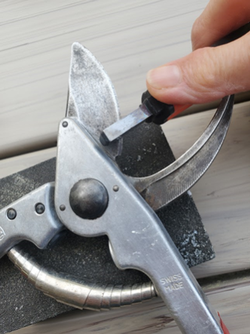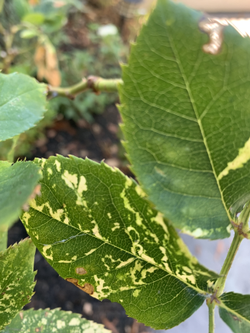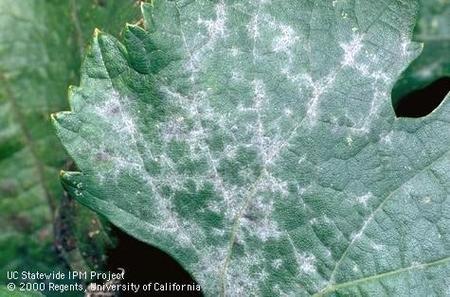Fall 2023
Be Kind to Your Tools to Be Kind to Your Plants
by Cynthia Engers
It’s easy to take our trusted garden tools for granted, but sometimes they, too, need care and attention. And that care entails cleaning, sharpening, and disinfecting.
Ideally, cleaning—removing dirt and wiping or scrubbing off plant residue—is a regular task during the planting and pruning season. Water and/or household cleaners, along with an abrasive helper, such as steel wool or a wire brush, should do the trick.

Sharpening the tools, notably pruners, loppers, and spades, may become more of a seasonal activity rather than a daily or weekly one. But it is not difficult and can be very satisfying. Sharp tools also prevent ragged cuts that invite disease or vermin. Generally, sharpening is a manual task because pruners and loppers have beveled edges, which an ordinary knife sharpener will damage.

Always lubricate tools after cleaning and sharpening to prevent rust and ensure smooth cutting action.
For a good overview of tool care basics and additional detail, these UC publications are helpful:
Garden Tool Care - HOrT COCO-UC Master Gardener Program of Contra Costa - ANR Blogs (ucanr.edu)
It’s useful to have some coaching when it’s time to sharpen tools, and these two videos are excellent:
https://www.youtube.com/watch?v=AMy_jtmihEQ
https://www.youtube.com/watch?v=vROuLbOuYq0
The third aspect of caring for our tools is ensuring they don’t inadvertently spread diseases among our plants. And this is a more complex subject. It is known that infected pruners can transmit some diseases, particularly those associated with leaf or stem pathogens. Most of the research to date, however, has focused on commercial crops in greenhouse settings rather than on common diseases in the home garden, so recommendations for gardens are not often specific.
We know, however, that there are three types of plant pathogens to consider: bacterial, fungal, and viral. Familiar examples include:



Most research on preventing pathogen transmission through tools compares the effectiveness of common disinfectants such as chlorine bleach, alcohol in various concentrations, and over-the-counter cleaning products. The results generally indicate:
- Any disinfectant significantly reduces disease transmission when compared with water or not disinfecting
- Most disinfectants are effective against viruses because viruses are relatively unprotected pathogens with less protection against disinfectants
- In the studies that have been conducted, over-the-counter household cleaners, when used at full strength, have been found to be very effective against bacteria.
- Many household cleaners kill fungi, though little is known about their effect on most specific garden fungi that may come into contact with garden tools. It is known, however, that fungi spread more frequently by wind, rain, and insects.
- Not all disinfectants are equally effective against all pathogens, so for advice on dealing with valuable plants with an identified pathogen such as fire blight, look for published research that has shown the selected disinfectant to be effective (your Master Gardener Help Desk can provide assistance: ccmg@ucanr.edu, (925) 608-6683.)
Recommendations:
- Spray, dip, or wipe your pruners between cuts on an infected plant or between cuts between an infected plant and a healthy plant. Spraying and soaking have been found to be the most effective methods of disinfection.
- Allow at least 10 to 60 seconds for the disinfectant to work
- Allow the disinfectant to dry before making the next cut
- Keep your pruners clean and sharp to make it easier for the disinfectant to thoroughly adhere to all parts of the blade surface
- For speed and convenience, try using two sets of pruners, so one can rest for the allotted time while you use the other set
- Ever since the COVID-19 outbreak, many new disinfectant wipes and sprays have become available, and they are especially convenient for quickly swabbing your pruners; however, don’t reuse a wipe
- While chlorine bleach is a very effective disinfectant, it is highly corrosive to metal and thus can damage your tools. It is better to use a less corrosive over-the-counter disinfectant.
In conclusion, take a generalist approach: don’t worry too much about which cleaner to use. Just be kind to your plants and remember to use one!
References:
Microsoft Word - Pruning.doc (wsu.edu) “Sterilized Pruning Tools: Nuisance or Necessity?”
Archive - California Agriculture (ucanr.edu)
Fire blight: pnfireblight.pdf (ucanr.edu)
Managing Common Diseases and Pests in the Home Orchard - YouTube
Previously published NtGB articles on this topic:
https://ccmg.ucanr.edu/News_to_Grow_By/?story=2510
https://files.constantcontact.com/c2115e3d101/25daec98-0fa3-4d38-99d0-ca317f27514d.pdf
